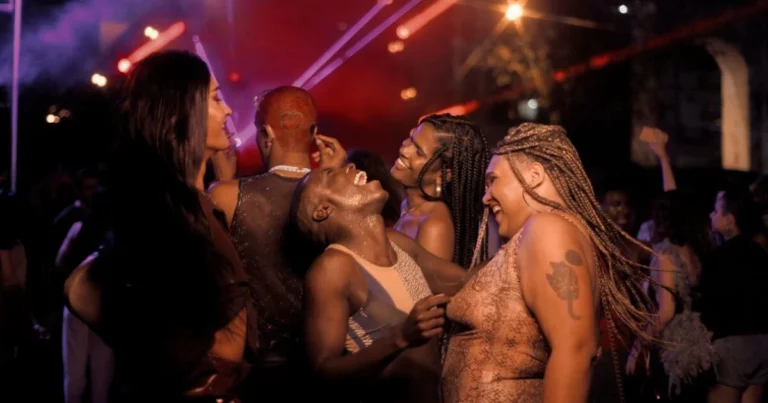I have walked into gatherings where my neurodivergent brain fizzed under strobe lights, watched friends in wheelchairs stare at a flight of stairs, and fumbled through introductions when pronoun pins were nowhere in sight. Those moments taught me that an inclusive play party never happens by accident—it starts with meticulous, values-driven prep. The checklist below expands on the original post, diving deeper into design, staffing, and post-event care so every guest feels invited, respected, and safe.
1. Vision and Values: The Why Behind Every Detail
Before shopping for floggers or mixing mocktails, gather your co-hosts and name the party’s core values. Ask, “Who might feel excluded here, and how do we change that?” When the inclusive play party vision is baked into your mission statement, accessibility upgrades feel like essential line items, not budget extras. Declare inclusivity goals on the invite—readers quickly sense whether the event is truly welcoming or just checking a box.
2. Building a Planning Team That Reflects Diversity
An inclusive play party gains depth when planners mirror attendee variety. Seek advisors who live with disabilities, people of color, trans folk, and neurodivergent players. Rotate leadership roles so no single identity shoulders “diversity duty.” If your circle lacks a perspective—say, Deaf kinksters—budget for a paid consultant. Lived experience spots gaps guidelines never catch.
3. Pre-Registration Forms and Clear Communication
Inclusive design begins long before guests walk in. Use pre-registration forms to ask:
- Preferred name and pronouns
- Access needs—mobility, sensory, medical
- Dietary restrictions
- Communication preferences (spoken, signed, text-based)
Explain how each answer guides tangible accommodations. Confirm details in follow-up emails, and share a downloadable inclusive play party guide featuring the schedule, consent policy, and venue map so all brains can preview the environment.
4. Venue Access and Mobility Mapping
Reserve thirty minutes with a tape measure and notebook:
- Doorway width: 34 inches clears most wheelchairs.
- Ramp slope: 1-inch rise per foot of length is ADA-friendly.
- Floorplan: wide paths between furniture; no tangled extension cords.
- Restrooms: at least one gender-neutral, wheelchair-accessible stall.
If your dream loft fails on non-negotiables, pivot venues. The most erotic décor cannot outweigh stairs that bar a guest from entry.
5. Sensory Zones for Diverse Nervous Systems
Neurodivergent, trauma-survivor, and chronic-pain bodies thrive on choice. Build three distinct zones in your inclusive play party:
- High-energy play space—music, percussion, cheering.
- Moderate lounge—soft beats, dim lights, casual conversation.
- Low-stim chill room—no music, soft lamps, headphones, weighted blankets.
Post clear signage at your inclusive play party so guests can self-regulate without explanation. This multimodal layout is the heartbeat of an inclusive play party.
6. Lighting, Sound, and Scent Choices
Skip strobe lights and flickering candles. Instead:
- Use warm LED lamps on dimmer switches.
- Offer earplugs at the door.
- Keep bass speakers off the same wall as impact benches—vibration travels.
- Choose unscented cleaners and avoid heavy incense; scent sensitivity is common.
Small tweaks turn potential sensory landmines into background comfort.
7. Pronoun Etiquette and Language
Print pronoun stickers in multiple fonts for low-vision guests. Model usage: “Hi, I’m Lilith—she/her.” Correct mistakes quickly and kindly. Place large posters near entrances reading, “Assume nothing; ask pronouns.” The poster’s presence alone signals that this inclusive play party cares about gender respect.
8. Safer-Sex Stations and Harm-Reduction Supplies
Visibility matters. Stock multiple tables with:
- External condoms in various sizes
- Internal condoms
- Dental dams and nitrile gloves
- Water-based and silicone-safe lubes
- Disposal bins and fragrance-free wipes
- Sharps container if needle play is approved
- Naloxone kit and drug-checking strips (if local laws allow)
Label everything clearly and restock throughout the night. A well-equipped station normalizes barrier use and encourages spontaneous safety.
9. Cleanliness Protocols and Equipment Rotation
Post a wipe-down schedule near each piece of furniture: “Clean before and after every scene.” Supply unscented disinfectant, disposable towels, and a laminated quick-care card for leather vs. silicone vs. wood. Rotate impact tools to wipe dry between uses. These steps transform hygiene from an afterthought into another pillar of the inclusive play party ethos.
10. Communication Cues and Scene Governance
Colored wristbands or fabric bands work wonders:
- Green: happy to chat
- Yellow: introvert warm-up mode
- Red: no conversation, please
For scenes, introduce a “Heads Up” hand wave—tops signal before entering a shared space with whips or ropes. Teach everyone basic monitor phrases like, “Hand check,” or, “Scene pause.” Clear, shared language slashes confusion and fosters collective care.
11. Staff Training and Conflict Response
At least two sober monitors should complete:
- First-aid/CPR certification
- De-escalation practice using scenario role-play
- Tour of every exit, fire extinguisher, and blackout route
- Understanding of consent policy consequences
Post the disciplinary flow—verbal warning then ejection, for example—so guests know issues are handled, not hushed. A transparent process puts safety culture at the center of the inclusive play party experience.
12. Food, Drink, and Allergen Safety
Label snacks for gluten, dairy, nuts, and shellfish. Offer substantial non-alcoholic drinks—sparkling water, tea, mocktails—equal in prominence to beer or cider. Balanced blood sugar prevents fainting, and sober options support guests in recovery.
13. Event Timeline and Predictability
Neurodivergent and anxious brains relax when they know what’s next. Publish a skeleton timeline:
- 8:00 pm doors
- 8:30 pm consent orientation (mandatory)
- 9:00 pm rope demo
- 10:00 pm impact zone opens
- Midnight cool-down routine
- 1:00 am last call for scenes
- 1:30 am lights up
Project the timeline on a wall or share it via QR code so late arrivals can orient quickly.
14. Inclusive Play-Party Budgeting Tips
Inclusivity costs less than lawsuits or hurt reputations. Allocate funds for:
- Ramps or temporary lifts
- ASL interpreters if requested
- Subsidized tickets for marginalized guests
- Extra cleaning suppliers
- Volunteer thank-you stipends
Publicize where the money goes. Transparent budgeting builds trust and makes future fundraising easier.
15. Post-Party Follow-Up and Community Care
An inclusive play party does not end at coat check. The next day:
- Email a thank-you note with a short feedback form—anonymous option included.
- Share resources: local consent workshops, mental-health hotlines, kink-aware therapists.
- Run a “lost-and-found” photo list for gear left behind.
- Debrief with staff, documenting wins and areas to refine.
Guests remember hosts who care about the morning after.
16. Continuous Improvement Cycle
Treat each event as a beta test. Compare survey responses, incident logs, and budget sheets. Rotate roles so new eyes catch stale blind spots. Schedule quarterly inclusivity audits—even without an upcoming party—to keep accessibility knowledge fresh.
Key Takeaways
- A truly inclusive play party is rooted in mission, diverse planning, and transparent communication.
- Accessible venues, sensory-friendly zones, and pronoun respect set the physical and social stage.
- Supplies, cleaning, and sober monitors translate intention into lived safety.
- Post-event feedback closes the loop and fuels continuous improvement.
Next Steps
- Strengthen verbal boundary muscles with Boundary Scripts You Can Actually Say—clear limits make group spaces safer.
- Hosting impact stations? Read Sensory Friendly Impact Play for tips on pairing toy textures with diverse nervous systems.
- Need a tailor-made game plan? Book an inclusivity consultation and we will design your next inclusive play party from invite to aftercare.






